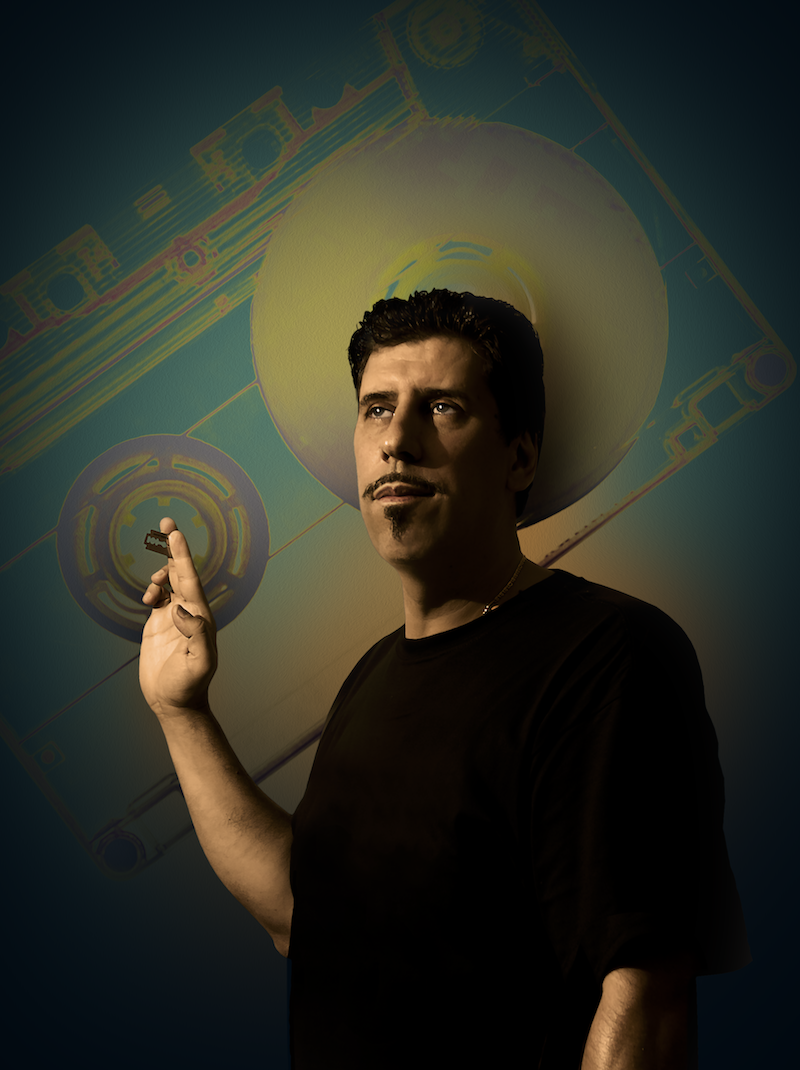Tony Humphries Mastermixes: A Selection by Gerd Janson
The Running Back boss selects some of his favorite Tony Humphries’ mixes
“I’ve talked about this in many interviews already, that the label is wrong. I’ve never liked the label, I’ve never liked the label to be categorised, because it should just be dance music, period or up-tempo R&B. I know that sounds vague and wide open, but dance music incorporates so much. You could incorporate white records, Latin records and a whole lot of records that are danceable. There’s so many different types of house they break it down to: there’s melodic house, there’s Balearic house, there’s hard house, there’s garage house – whatever.” — Tony Humphries
This quote from Jonathan Fleming’s 1995 interview and illustrated book What Kind of House Party is This? already tells you everything you should know about Tony Humphries and his DJ ethos. There was a time when the supreme selector behind Newark’s Club Zanzibar, remixer extraordinaire and Kiss FM radio jockey was “thee maaaan” for his peers, his dance floor and a phalanx of DJs and dance music collector’s around the world that desperately tried to get their hands on recordings of his mix shows.
Despite that level of affection, his influence is not as apparent as let’s say Frankie Knuckles’ or Larry Levan’s – albeit not less important. He grew up in Brooklyn, but Humphries was the figurehead of the so-called “Jersey Sound,” a genre formative to a whole generation of artists, producers and DJs from New York and New Jersey. As paradoxical as it might sound, Humphries created a genre or sub-genre of dance music by defying separation or delving into micro segmentation. That – and his impeccable and adventurous mixing and programming skills – made Tony Humphries a world-traveling DJ and arguably the most-thanked person on house-record-shout-outs next to God. The following chronological selection of live and radio mixes is only a clipping of his gift.
1980 - KISS FM Mastermix with Shep Pettibone
Hired by NYC’s seminal dance music producer Shep Pettibone to fill in for an absent DJ, Humphries quickly found his place. Here you can hear why. The cream of boogie and disco from 1980 presented is full of verve, i.e. listen to Slave’s “Watching You,” Teena Marie’s “I Need Your Lovin’,” “Give Me Your Love’” by Sylvia Striplin and Machine’s “Is It Love?” turning into one long song.
1985 - KISS FM Mastermix
The “Hump” delivering insight into the short period just before the dawn of house music, when The Gap Band, hip hop and Gwen Guthrie happily existed next to each other. It’s almost heaven.
1988 - Live at Zanzibar
Manning the booth at Club Zanzibar and its equivalent on the radio side, Tony Humphries was working his way up on a weekly basis by the end of the 1980s. Levan’s Paradise Garage had just closed its gates and a new dance sound was emerging out of Chicago. Humphries is paying respect to the former’s heritage with records by Loose Joints, First Choice’s “Doctor Love,” and Talking Heads, while paving the way for the future with DJ International’s Sterling Void and the Basement Boys on Jump Street Records.
1990 - KISS FM Mastermix Dance Party
Two years later, Tony Humphries was firmly established and unrivaled as the primus inter pares in the US-American DJ league. Here you have three examples why. Cutting back and forth between hilarious hip house by Numarx, local talent on Jersey’s Movin’ Records or Logic’s “The Warning,” melting JoVonn’s “Turn and Run Away” with Sweet Exorcist on Warp Records, championing Nu Groove and Italian house, while surprising with Belgian New Beat, Humphries overlays and blends records for what seems ages. A true masterclass, endless listening fun and one DJ in his prime.
1992 - KISS FM, Live from Zanzibar
By 1992, Tony was almost out of the door and on its way to a residency at London’s Ministry of Sound. So this feels like a farewell to a time and a place in dance music history that benefited from the same unique symbiosis of the dance floor and the DJ who serves it that turned places like the Warehouse and the Muzic Box in Chicago or the aforementioned Paradise Garage into pantheons. Live and direct, this is a flawless example of a relentless DJ and a window into an era when Todd Terry was king, Masters at Work were on a roll, and Mood II Swing were just starting to make waves. Mind the live radio shout outs.

